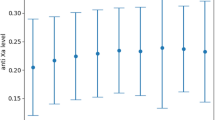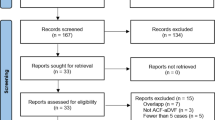Summary
A series of medicolegal autopsies on 76 patients with fatal outcome following haemorrhage from ruptured intracranial aneurysm comprised 63 surgical patients and 13 non-surgical patients (M : F 6:7; mean age 44.0 ± 18.1 years), all of the latter with sudden fatal course or dramatically poor clinical condition on admission. The medicolegal autopsy was performed because of the sudden and unexpected nature of the death, or to exclude surgical malpractice. Postmortem angiography with vulcanising contrast medium disclosed intraventricular haemorrhage (IVH) in 12 (92%) of the non-surgical fatalities, whereas IVH was thus characterized in only 17 (27%) of the 63 fatalities who had undergone neurosurgery (P < 0.0001). The most common type of haemorrhage among surgical cases was, instead, subarachnoid haemorrhage (SAH) (P<0.05). In 35 of the 76 cases (46%), casts of cerebral arteries demonstrated vasospasm-induced segmental narrowings, but such narrowings were no more frequent among the non-surgical cases than in surgical cases, nor did these narrowings correlate with IVH. In non-surgical patients, the haemorrhage most commonly originated from a ruptured aneurysm of the middle cerebral artery (P < 0.05), an event more frequently associated with the presence of IVH (P < 0.05) than without it. The results indicate that the main cause for sudden and unexpected death or rapidly developed poor non-operable clinical condition of patients with ruptured intracranial aneurysm is an IVH from a middle cerebral artery aneurysm, complicated in many cases by cerebral artery vasospasm.
Zusammenfassung
Eine Serie von 76 rechtsmedizinischen Obduktionen bei Todesfällen mit tödlichem Ausgang einer Blutung aus rupturierten intrakranialen Aneurysmen umfaßte 63 chirurgische Patienten und 13 nichtchirurgische Patienten (m : w = 6 : 7; mittleres Alter 44,0 ± 18,1 Jahre). Sämtliche der letzteren Fälle hatten einen plötzlichen tödlichen Verlauf oder eine infauste Prognose bei der klinischen Einlieferung. Die rechtsmedizinische Obduktion wurde wegen der plötzlichen und unerwarteten Todesart durchgeführt oder zum Ausschluß chirurgischer Fahrlässigkeit. Die postmortale Angiographie mit einem vulkanisierenden Kontrastmedium deckte eine intraventrikuläre Hämorrhagie (IVH) in 12 (92%) der nicht-chirurgischen Todesfälle auf, wohingegen eine IVH in nur 17 (27%) der 63 Todesfälle festgestellt wurde, welche einer neurochirurgischen Behandlung unterzogen worden waren (p < 0,0001). Der häufigste Typ der Hämorrhagie unter den chirurgischen Patienten war stattdessen eine subarachnoidale Blutung (SAH) (p < 0,05). In 35 der 76 Todesfälle (46%) zeigten Ausgüsse der Zerebralarterien segmentale Einengungen, welche durch Vasospasmen induziert waren, aber solche Einengungen waren unter den nicht-chirurgischen Fällen nicht häufiger als unter den chirurgischen, auch korrelierten diese Einengungen nicht mit einer IVH. Bei den nicht-chirurgischen Fällen war die Quelle der Hämorrhagie am häufigsten ein rupturiertes Aneurysma der Arteria cerebri media (p < 0,05); dieser Vorgang war häufiger mit der Anwesenheit einer IVH assoziiert (p < 0,05) als nicht-assoziiert. Die Ergebnisse zeigen, daß die Hauptursache für den plötzlichen und unerwarteten Tod oder die sich schnell entwickelnde Nicht-Operabilität von Patienten mit rupturierten intrakraniellen Aneurysmen eine IVH aus der Arteria cerebri media ist, welche in vielen Fällen durch cerebrale arterielle Vasospasmen kompliziert werden.
Similar content being viewed by others
References
Leestma JE (1988) Forensic neuropathology. Raven Press, New York, pp 27–63
Mohr G, Ferguson G, Khan M, Malloy D, Watts R, Benoit B, Weir B (1983) Intraventricular hemorrhage from ruptured aneurysm. Retrospective analysis of 91 cases. J Neurosurg 58:482–487
Brott T, Mandybur TI (1986) Case-control study of clinical outcome after aneurysmal subarachnoid hemorrhage. Neurosurgery 19:891–895
Hayashi M, Handa Y, Kobayashi H, Kawano H, Nozaki J, Noguchi Y (1989) Prognosis of intraventricular hemorrhage due to rupture of intracranial aneurysm. Zentralbl Neurochir 50:132–137
Peerless SJ, Kassel NF, Komatsu K, Hunter IG (1980) Cerebral vasospasm: acute proliferative vasculopathy? II. Morphology. In: Wilkins RH (ed) Cerebral arterial vasospasm. Williams & Wilkings, Baltimore, pp 88–96
Inagawa T, Hirano A (1990) Ruptured intracranial aneurysms: an autopsy study of 133 patients. Surg Neurol 33:117–123
Karhunen PJ, Männikkö A, Penttilä A, Liesto K (1989) Diagnostic angiography in postoperative autopsies. Am J Forensic Med Pathol 10:303–309
Karhunen PJ (1991) Neurosurgical vascular complications associated with aneurysm clips evaluated by post-mortem angiography. Forensic Sci Int 51:13–22
Yamamoto Y, Waga S (1982) Persistent intraventricular hematoma following ruptured aneurysm. Surg Neurol 17:301–303
Karhunen PJ, Penttilä A, Erkinjuntti T (1990) Arteriovenous malformation of the brain: imaging by post mortem angiography. Forensic Sci Int 48:9–19
Karhunen PJ, Kauppila R, Penttilä A, Erkinjuntti T (1990) Vertebral artery rupture in traumatic subarachnoid haemorrhage detected by post-mortem angiography. Forensic Sci Int 44:107–115
Kondziolka D, Bernstein M, Spiegel SM, Ter Brugge K (1988) Symptomatic arterial luminal narrowing presenting months after subarachnoid hemorrhage and aneurysm clipping. J Neurosurg 69:494–499
Hughes JT, Schianchi PM (1978) Cerebral artery spasm. A histological study at necropsy of the blood vessels in cases of subarachnoid hemorrhage. J Neurosurg 48:515–525
Eldevik OP, Kristiansen K, Torvik A (1981) Subarachnoid hemorrhage and cerebrovascular spasm. Morphological study of intracranial arteries based on animal experiments and human autopsies. J Neurosurg 55:869–876
Mizukami M, Kim H, Araki G, Mihara H, Yoshida Y (1976) Is angiographic spasm real spasm? Acta Neurochir (Wien) 34:247–259
Author information
Authors and Affiliations
Rights and permissions
About this article
Cite this article
Karhunen, P.J., Servo, A. Sudden fatal or non-operable bleeding from ruptured intracranial aneurysm Evaluation by post-mortem angiography with vulcanising contrast medium. Int J Leg Med 106, 55–59 (1993). https://doi.org/10.1007/BF01225041
Received:
Revised:
Issue Date:
DOI: https://doi.org/10.1007/BF01225041




